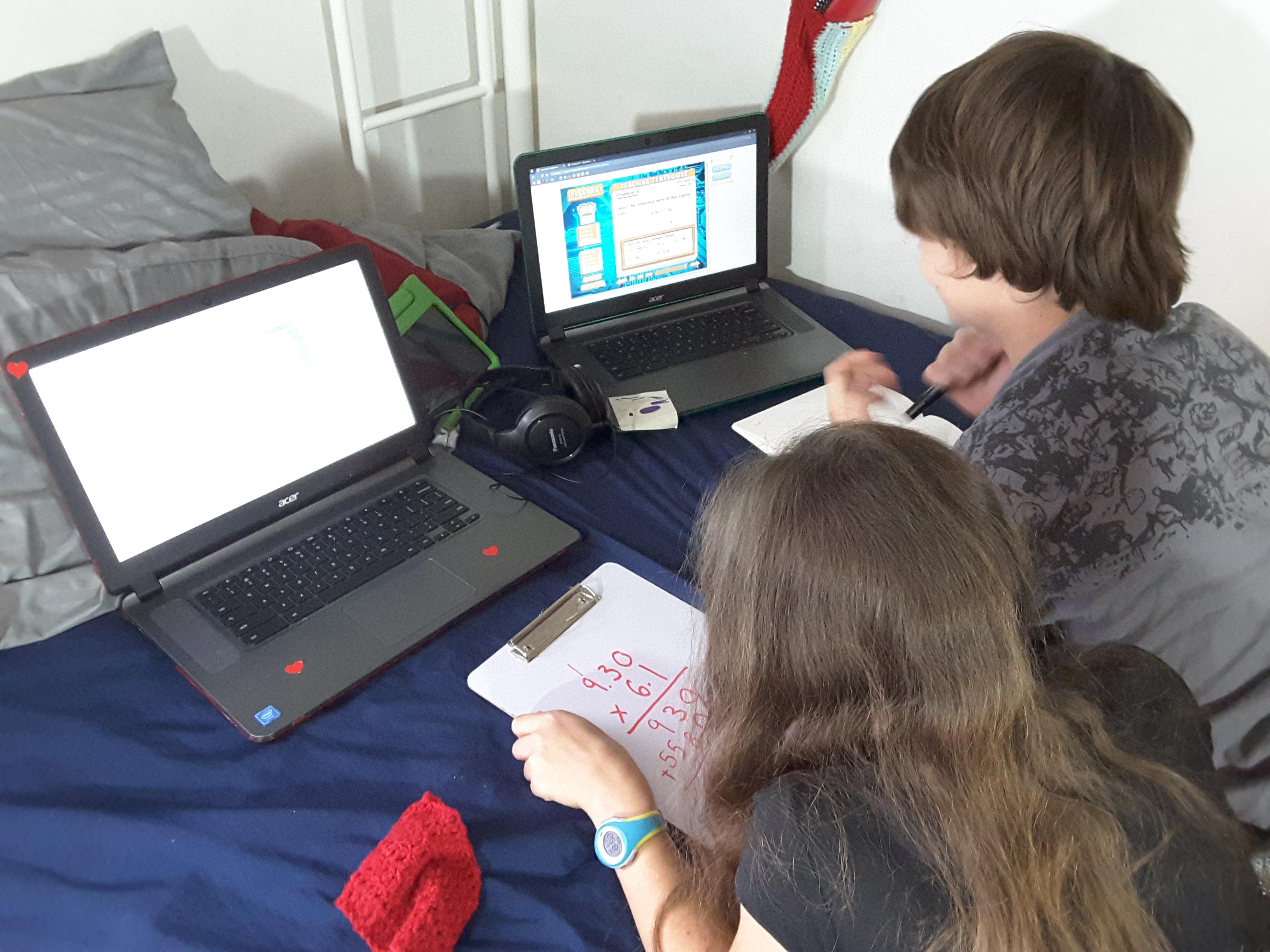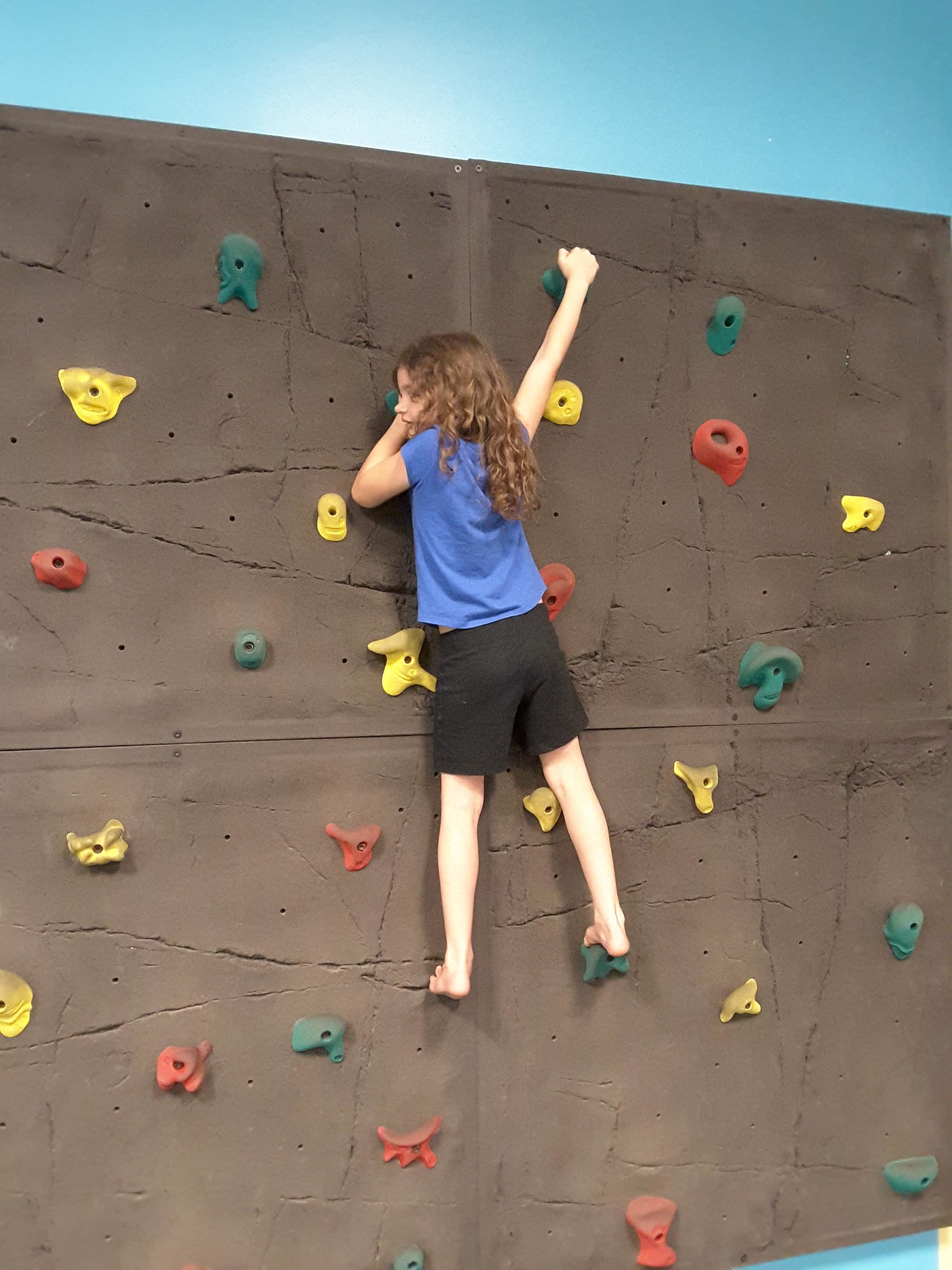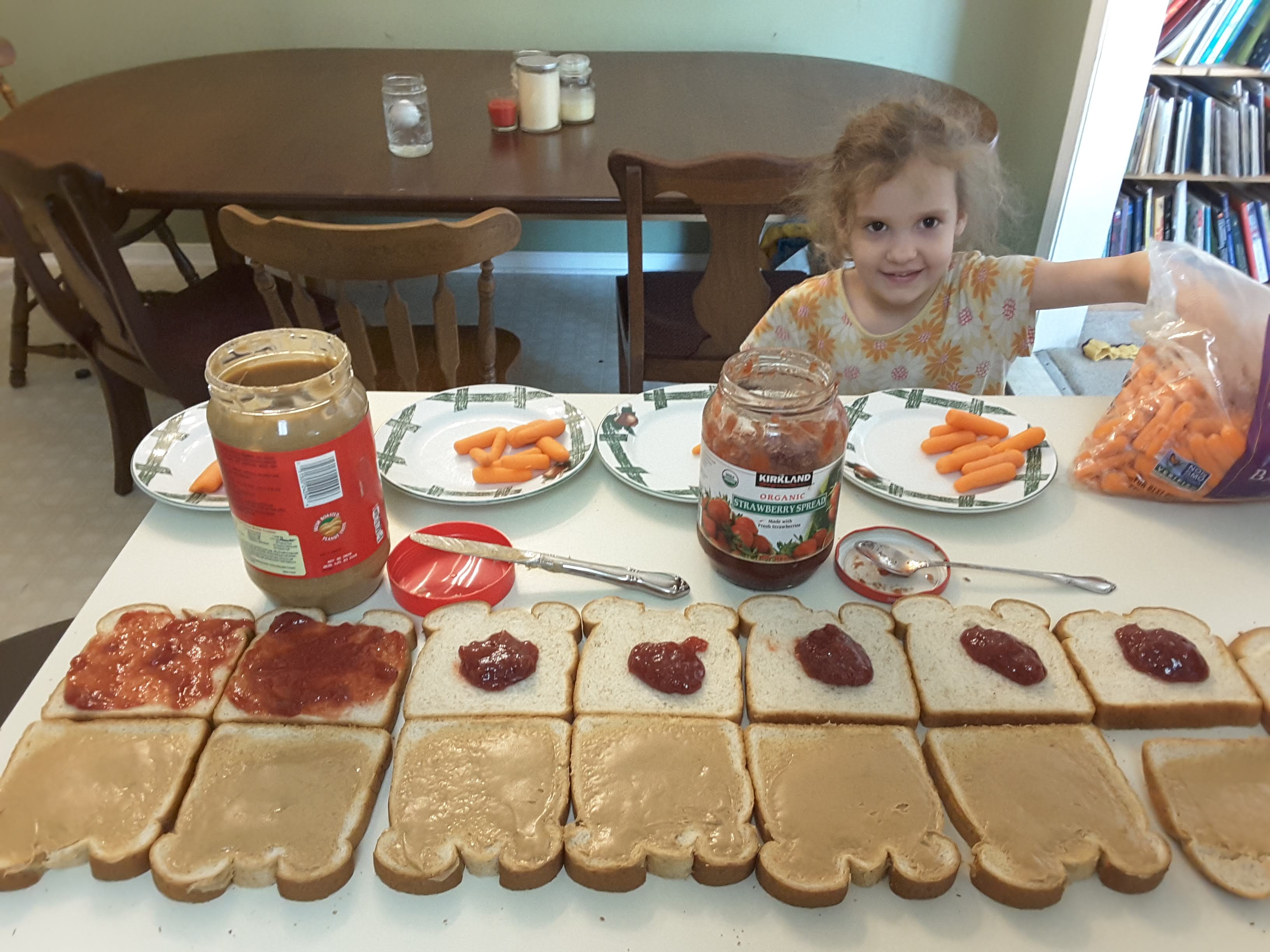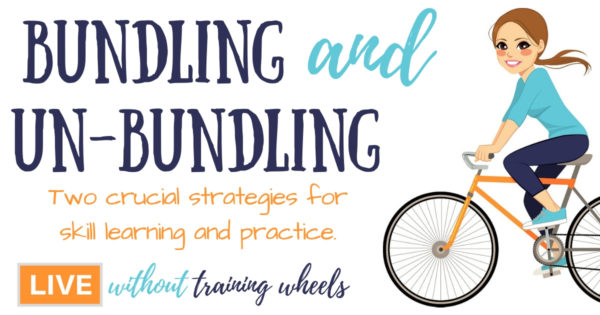
I was talking with a friend the other day about doing school work with kids. Her kids are in public school; mine are homeschooled.
But we both agreed that our biggest problem with school work is the same: telling the difference between skill issues and character issues.
If your child resists doing his school work, is it because he’s lazy? Is it because he’s struggling with the material? Is it because he’s afraid of getting something wrong?
How do you tell the difference? And how do you know when to push and when to give a little?
Consider the Whole Picture
If your child resists working on his math (or is easily distracted or pokey) you might wonder if this is a math problem or a character problem. Step back for a moment and consider the big picture view.
Is this a child who generally resists doing what he’s asked? I mean, nobody likes to clean up after the dog in the backyard, but aside from that, is he generally cooperative?
Is this a child who is generally able to explain his concerns, struggles, or fears but in this case is confusingly silent? Or, in the reverse, a child who rarely has complaints but is full of protests about this topic?
Is this a child who, in other areas of life, exhibits timidity? Does perfectionism hold him back in other skills or efforts in life?
To summarize: is this struggle a common theme you see throughout his day, or is this situation an anomaly? If it’s an anomaly, look to support his skill development. If it’s a trend, consider the developmental or character issue that may need addressing.
Consider the Whole Child
Even if this is a trend that you see throughout various areas of this child’s life, remember that human beings are this complex mix of body and soul. Flesh and emotions.
The two aspects of our beings are deeply and mysteriously interwoven. They play off of each other in the oddest of ways. Every heard of PMS?
Did you know that children as young as eight or nine are beginning to experience a massive influx of prepubescent hormones? We often think of the teenage years as the onset of hormones.
But by the time you can view (or smell) the visible effects of those hormones (body shape, hair and voice changes, etc.) the hormones have already been at work behind the scenes.
Things like diet and sleep cycle can also affect behavior in ways you might not have expected or realized.
Consider the Long View
In the long run, what do you really want? Yes, of course you want your child to learn long division. But do you want it badly enough to sacrifice your relationship over it? Of course not.
There are times when our children need to be pushed. There are times when they need to be stretched or held accountable.
But – whether this is a character struggle or a skill issue – what they need most is to know that you are on their team and that they will always have you.
The amount of stretching or pushing your relationship can handle depends on the strength of the relationship. So make use of all the odd moments of the day to pour into that relationship.
Strategies for Stretching
When a child needs an extra push to help them go a little farther, start small. Set incremental, manageable goals in order to help them to see success.
Instead of thinking in terms of “catching up with math”, or “writing an essay” try …
- three (five? fifteen?) minutes of good work on a paragraph
- one (three? five?) problem complete without help
- a good re-framing conversation about success and failure
Or, adapt the goals (content and scope) to fit where your learner is now and their capacity for reach.
At the end of the day, there is some value and some ability to separate out skill development from character development. But the truth of the matter is that they are often closely intertwined. After all, a healthy perspective and towards skill training is, itself, a skill, is it not?
Parsing Out the Finer Points of Skill Mastery
In this post, we’ve focused on distinguishing skill development from character development. But what if you’ve determined that this is a problem of skill development and mastery? Where do you go from there?
I’d like to invite you to attend the next episode of “LIVE without Training Wheels” – a workshop on Bundling and Un-bundling: two important strategies in the homeschool mom’s tool belt! Click here to save your spot!
When should you combine skills together? When should you separate them apart? What are some practical strategies for bundling and un-bundling? Join us to find out!
- The Ultimate Guide to Relaxed Poetry in Your Morning Time - April 27, 2020
- Holiday Time when Your Family is Anti-Homeschool - November 15, 2018
- When Skill Learning Gets Messy - October 11, 2018





